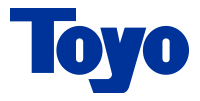Two treatment plants for Acid Mine Drainage (AMD) near Johannesburg have received a boost to their efficiency, thanks to IPR’s innovative SlurrySucker dredging unit.
The problem of AMD has beset historic mining areas around Johannesburg, where water in deep underground mining areas has become contaminated through its contact with broken rock containing sulphur-bearing minerals. As it rises and decants on surface, it poses a serious health risk – and contaminates other water resources.
As part of the treatment process, this highly acidic water is treated with lime and flows through two reactors at the AMD plant, where sediment settles and gradually fills up the concrete channels of each reactor. According to Ruaan Venter, Business Development Manager at IPR, this was causing extensive downtime for the plant, as each reactor had to be emptied of water before the acidic silt could be excavated.

“To allow one reactor to be cleaned, it had to be closed off – reducing plant throughput and placing extra strain on the other reactor,” Venter explains. “The customer needed a solution that would allow them to gain more uptime from the plant, as digging out the silt was disruptive and time consuming.”
IPR’s SlurrySucker is a dredging system that suspends a heavy duty submersible slurry pump from a specially designed flotation raft, allowing continuous dredging with minimal supervision. For the AMD plant, a customised solution was required due to the specific structure of the reactors. Initially, IPR had made a standard version of its smaller unit – the Mini SlurrySucker – available on rental to the plant. This proved itself in the application, and the plant chose to invest in its own unit, but required some special adaptations to be made – especially to improve mobility.
“Using our depth of in-house design and engineering expertise, we created a custom version of our Mini SlurrySucker,” he explains. “A key aspect of the customer’s requirement was that the unit would not require any lifting by an on-site crane, from one part of the reactor to another.”
As a result, the custom-engineered Mini SlurrySucker was designed to pass under the walkways of the reactor, allowing it to manoeuvre through the channels. To resist the acidic water, the construction frame is stainless steel.

“We equipped the unit with a Toyo heavy duty GR20 submersible slurry pump, which is part of our range – as the official distributor in Southern Africa,” he says. “This heavy duty pump, with its solids handling capability of up to 30 mm particles, is ideally suited to this application, where the slurry comprises about 60% water and 40% solids.”
This 15 kW pump can deliver up to 190 m3 an hour at a maximum head of 30 metres, although the plant will be required to meet the volume limits of the downstream gold processing plant. This model was chosen due to its robust performance and low maintenance requirements, which deliver low total cost of ownership to the user.
In addition to this, the SlurrySucker is equipped with an Atlas Copco Weda D50 pump which will be used to force clean water to the main slurry pump assisting with agitating the slurry. This unit is capable of handling dirty water with a specific density of up to 1,1 and has a solids handling capability up to 12 mm particles.







